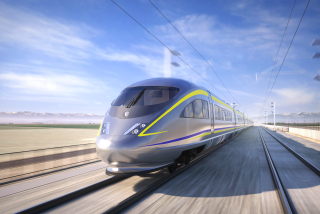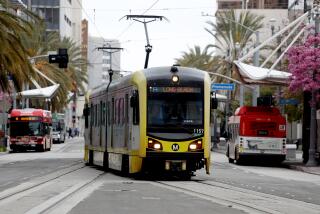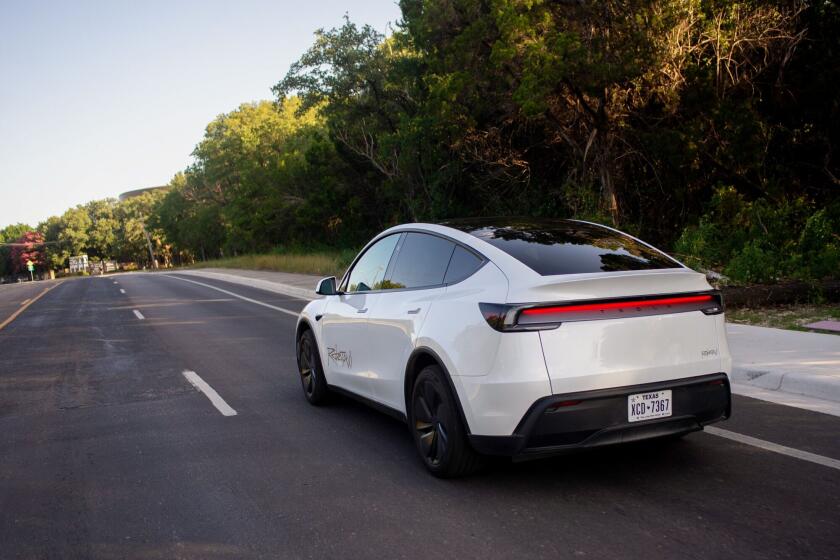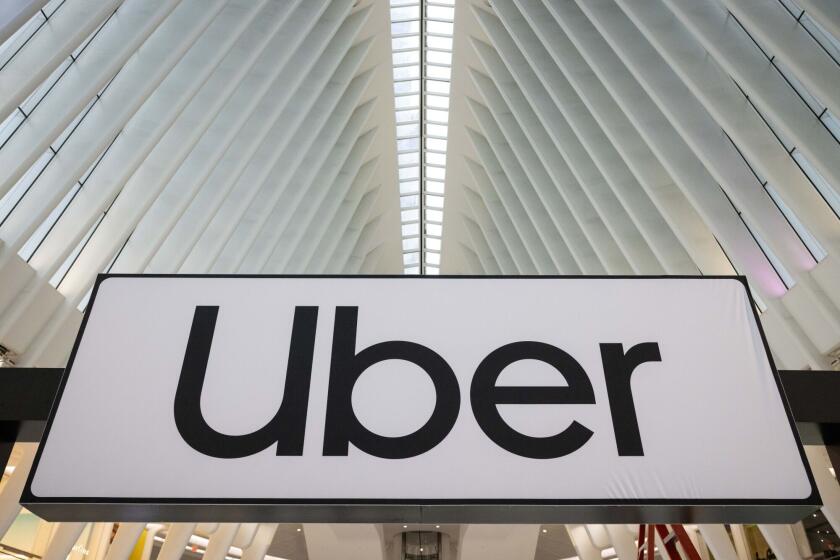Subway Tunnel Ban May Be Lifted
- Share via
WASHINGTON — Two decades after the federal government effectively blocked construction of a subway to Los Angeles’ Westside, Congress is on the verge of clearing a major obstacle to the long-deferred project.
At the urging of Rep. Henry A. Waxman (D-Los Angeles), the House is expected Wednesday to repeal a ban on tunneling through West Los Angeles, a key step in Mayor Antonio Villaraigosa’s drive to bring the Red Line from its current Mid-Wilshire terminus to the sea.
Senate approval is expected soon afterward.
“The progress of Mr. Waxman’s legislation is great news for Los Angeles,” the mayor said in a statement Monday, adding that it would “allow the city to renew its partnership with the federal government to reduce traffic congestion.”
The 13.2-mile extension, which transit officials estimate would cost at least $4.8 billion, is still years away.
And even with a congressional blessing, the project faces many more obstacles, not the least of which is the difficult and politically delicate task of raising money for the project.
But Waxman’s push to repeal a ban he championed after a 1985 subterranean methane explosion in the city’s Fairfax neighborhood further fuels the campaign to revive the city’s most ambitious public transit line.
A few years ago, that campaign seemed all but dead.
Cost overruns, massive disruptions and construction defects in the 1990s sapped public support for subway construction in Los Angeles County.
In 1998, county Supervisor Zev Yaroslavsky seized on public anger to push a ban on the use of local sales tax money for further tunneling, limiting the Metropolitan Transportation Authority’s ability to extend the Red Line to the west.
But increased traffic through the Westside has rekindled support for a subway. West Hollywood and Beverly Hills, once leery of a connection to the region’s public transit system, now support the project.
And during the 2005 mayoral campaign, Villaraigosa made the Red Line a central part of his expansive vision for modernizing Los Angeles.
Today, Yaroslavsky, who said he favors a Red Line extension, says his ban would not preclude the subway project because sales tax dollars could be used for non-tunneling parts of the project while other local money could be used to fund the tunneling.
For his part, Waxman said he simply wanted to remove the tunneling ban now that experts have concluded that construction can be completed without risk of further methane explosions.
But the 16-term congressman said others would have to lead the campaign for the Red Line. “I’m going to defer to local leaders,” Waxman said.
Villaraigosa has made it clear that he is ready to lead the charge.
His efforts will get a boost if voters approve a massive state infrastructure bond measure this fall that could make as much as $1 billion available for the Red Line extension.
But the mayor -- whose administration has been focused for months on his school district control efforts -- continues to face big obstacles to making his subway dream a reality.
In Los Angeles, other local politicians support building transit lines that would almost certainly cost a fraction of the subway.
A mile of subway can cost 10 times as much as a mile of light-rail line.
The mayor is already contending with irritated county Supervisors Mike Antonovich, who wants to extend the Gold Line into the San Gabriel Valley, and Gloria Molina, who has criticized the mayor for his aggressive Red Line campaign.
Molina, who heads the MTA board, has been a longtime champion of the Gold Line extension into Los Angeles’ Eastside, which is part of her district.
The five county supervisors have permanent seats on the MTA board.
Bus rider advocates are leading the opposition. “It’s going to be a $5-billion hole in the ground that’s going to bankrupt the bus system,” said Manuel Criollo, a spokesman for the Bus Riders Union.
He wants transit officials to buy and operate 1,000 more buses instead of pumping billions of dollars into a subway extension.
The Red Line project faces additional challenges in Washington, where the region’s congressional delegation is also split over which rail lines should be built first.
Additionally, other Los Angeles projects are further along in getting federal funding.
The Eastside Gold Line extension, which is underway, is already receiving money from Washington.
And MTA officials are working to secure federal money for the Exposition Line, which is to be built from Exposition Park to Culver City and, officials hope, ultimately to Santa Monica.
During a visit to Capitol Hill last week, Villaraigosa downplayed the remaining challenges, noting the many years it took former Mayor Tom Bradley to begin construction of the subway.
“Tom Bradley didn’t get a subway built in his first term,” Villaraigosa said.
*
Times staff writer Jean Guccione contributed to this report.
More to Read
Sign up for Essential California
The most important California stories and recommendations in your inbox every morning.
You may occasionally receive promotional content from the Los Angeles Times.














